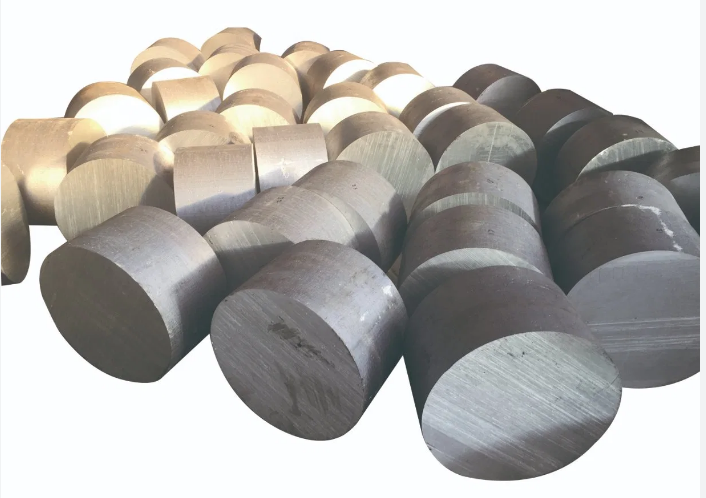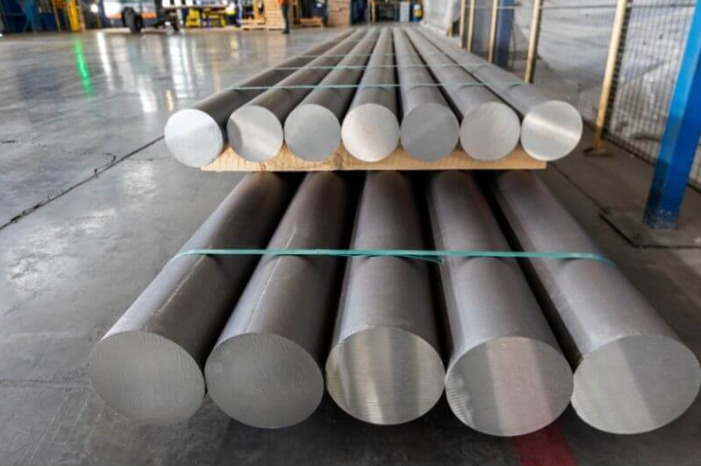The best aluminum alloy for extrusion depends on specific application requirements, but 6000 series alloys like 6061 and 6063 are commonly used due to their versatility and formability.
Overview of Aluminum Alloys for Extrusion
Characteristics of Aluminum Alloys in Extrusion
Aluminum alloys stand out in extrusion for their lightweight and strength. They resist corrosion effectively, ensuring durability in various environments. A major advantage of these alloys is their malleability, which simplifies shaping them into complex profiles. However, the chosen alloy impacts extrusion speed and quality. For example, 6063 alloys excel in detailed extrusions due to superior flow, whereas 7075 offers high strength but challenges in extrusion.

Comparison of Common Aluminum Alloys Used in Extrusion
| Alloy | Strength | Corrosion Resistance | Applications |
|---|---|---|---|
| 6061 | Moderate | Good | Structures, automotive parts |
| 6063 | Less than 6061 | Excellent | Buildings, window frames |
| 7075 | Very High | Moderate | Aerospace, defense |
6061 balances strength and workability, offering cost-effectiveness for various uses, though it may not provide the best finish.
6063, the ‘architectural alloy’, ensures high-quality finishes, perfect for aesthetic-focused extrusions.
7075 matches many steels in strength, ideal for demanding applications, but it is more expensive and power-intensive in extrusion.
Discover more about aluminum alloys on the Aluminum Alloys Wikipedia page.
6061 Aluminum Alloy: Properties and Applications
Physical and Mechanical Properties of 6061
6061 aluminum alloy, known for its versatility, combines excellent mechanical properties and weldability. It typically contains magnesium and silicon as its major alloying elements. The tensile strength of 6061 aluminum alloy can range from 20,000 to 42,000 psi, making it highly durable. Its yield strength, around 35,000 psi, further contributes to its resilience in various applications. 6061 aluminum also has a good strength-to-weight ratio, important for applications requiring lightweight but strong materials. It exhibits good corrosion resistance, especially against atmospheric conditions. The alloy’s thermal conductivity is notable, around 167 W/m-K, which benefits heat-exchange applications.
Industrial and Commercial Uses of 6061 Alloy
6061 aluminum alloy serves a wide range of applications due to its balanced properties. In the transportation industry, it’s used for manufacturing automotive parts, railway cars, and yachts, where strength, durability, and light weight are crucial. The construction sector utilizes 6061 in structural components like beams and frames, taking advantage of its strength and resistance to corrosion. In electronics, its thermal conductivity makes it suitable for heat sinks. The aerospace industry also uses 6061 for various components, although higher-strength alloys are often preferred for critical applications.
For more information on 6061 aluminum alloy, explore the 6061 Aluminum Alloy Wikipedia page.
6063 Aluminum Alloy: Features and Extrusion Suitability
Key Characteristics of 6063 Alloy
6063 aluminum alloy, often referred to as the “architectural alloy”, is renowned for its excellent extrudability and beautiful surface finish. This alloy typically comprises magnesium and silicon, which contribute to its unique properties. With a tensile strength ranging from 16,000 to 30,000 psi, 6063 strikes a balance between strength and formability. Its yield strength hovers around 21,000 psi. The alloy’s elongation rate, a measure of ductility, can reach up to 20%, making it highly adaptable for complex extrusion profiles. 6063 also boasts superior corrosion resistance, particularly against atmospheric conditions, and has a thermal conductivity of approximately 201 W/m-K, slightly higher than that of 6061 alloy.

Advantages of 6063 in Extrusion Processes
6063 aluminum alloy excels in the extrusion process due to its excellent formability and smooth surface finish. This makes it an ideal choice for intricate extrusions that require a decorative finish, such as window frames, door frames, and architectural trims. Its ability to undergo complex shaping with minimal cracking or defects significantly reduces waste and increases efficiency in production. The alloy’s good thermal conductivity and corrosion resistance also lend well to outdoor applications, ensuring longevity and performance. While 6063 may not match the strength levels of some higher-grade alloys, its balance of strength, ductility, and aesthetics make it a popular choice for many architectural and structural applications.
For more detailed insights into 6063 aluminum alloy, visit the 6063 Aluminum Alloy Wikipedia page.
7075 Aluminum Alloy: Composition and Performance
Analysis of 7075 Alloy’s Composition
| Element | Percentage | Contribution to Properties |
|---|---|---|
| Zinc | 5.1% – 6.1% | Increases strength |
| Magnesium | 2.1% – 2.9% | Enhances corrosion resistance |
| Copper | 1.2% – 2.0% | Improves hardness and strength |
| Chromium | 0.18% – 0.28% | Adds stability and reduces stress corrosion cracking |
7075 aluminum alloy is a high-strength material primarily composed of zinc, magnesium, and copper. The combination of these elements makes it one of the strongest aluminum alloys available. Its zinc content is notably high, significantly enhancing its strength, while magnesium and copper contribute to its overall hardness and resistance to corrosion.
Strength and Durability of 7075 in High-Stress Applications
| Property | Value/Range | Impact on Performance |
|---|---|---|
| Tensile Strength | 73,000 to 78,000 psi | Suitable for high-stress applications |
| Yield Strength | 63,000 to 69,000 psi | Maintains shape under pressure |
| Hardness | 150 Brinell | Resists wear and abrasion |
| Fatigue Strength | 23,000 psi | Endures repeated stress without failing |
7075 aluminum alloy excels in applications where strength is crucial. It is widely used in aerospace components, such as aircraft wings and fuselages, where its high tensile and yield strengths are essential. The alloy’s hardness makes it resistant to wear and abrasion, ideal for high-impact environments. Its fatigue strength is also notable, allowing it to withstand repeated stress without failure. While its high strength is a significant advantage, it is more challenging to work with during extrusion compared to other aluminum alloys and is generally more expensive.
For further details on 7075 aluminum alloy, explore the 7075 Aluminum Alloy Wikipedia page.




